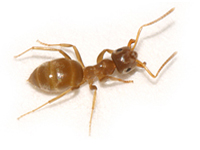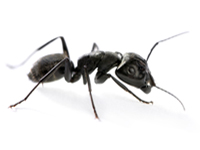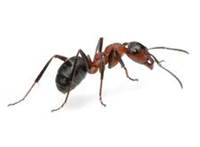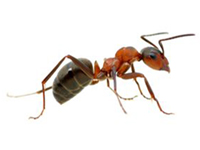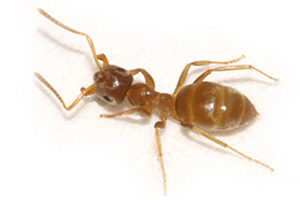
Size:
Small 1/8 to 3/8 inch
Characteristics:
The citronella ant is also called the "large yellow ant" and gets it's name from the citronella (lemon) scent it emits when crushed. They are subterranean by nature and feed on the secretions(honeydew) of aphids and mealy bugs. They will even protect and move them to a new plant.
Sometimes the swarmers will enter the home through cracks in the slab or foundation but workers seldom invade buildings looking for food like many other ant species since they feed on the secretions(honeydew) of the aphids and mealy bugs.
In the early-spring, the late fall and sometimes even in the winter, these ants can be found entering the home and causing "termite scares". Understanding that the termite swarmer wings are twice the length of the body itself will help prevent the panic that your home is infested with termites. The workers can also be a problem when they push soil up through cracks in the slab or foundation.
Habitat:
Citronella Ants generally locate their colonies under logs, in the root systems of plants, in the soil under the mulch next to a foundation or slab and even underneath the slab or foundation as well. Sometimes they can even be found in the soil of a crawlspace.
Control:
Ants seek the path of least resistance as they travel from the soil through openings in foundations or slabs. To reduce an invasion, measures should be taken to seal or caulk entry points such as cracks in slabs, gaps around water faucets or dryer vents, and openings around door sills and cellar window frames. In most cases, once cracks are sealed, yellow ants cease to be a problem. Stray ants can be crushed or vacuumed up. If mechanical control measures fail to reduce the problem, then pesticides registered for ant control can be used to treat the foundation, the cracks in the foundation or slab as well as the baseboards in the areas where the ants are coming in.

